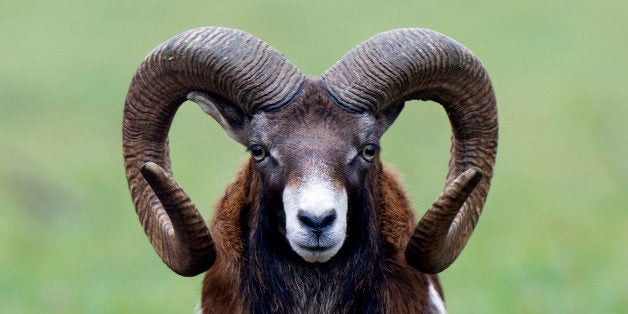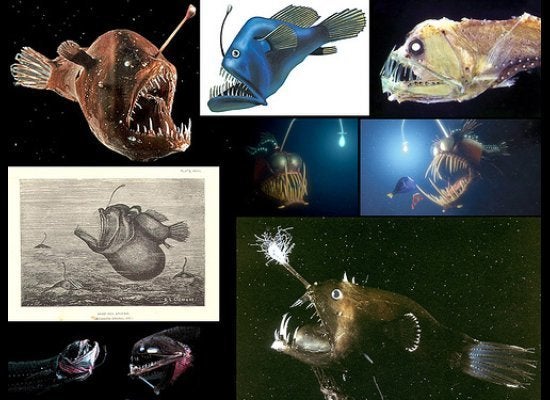
LISBON—Sometimes it's better not to be the best. Take rams. Those with bigger horns get the girl more often—but they also die younger, according to research being presented here tomorrow at the XIV Congress of the European Society for Evolutionary Biology. The tradeoff helps explain a long-standing puzzle about why the best genes for mating don’t take over.
Pondering the peacock's elaborate plumage, the father of evolutionary biology, Charles Darwin, proposed that the drive for sex—and for producing offspring—was a powerful force in evolution. Fending off potential rivals or vying for a female's attention has driven males to be ever more extreme—bigger, stronger, more colorful. This process, called sexual selection, should also affect the genes, so that only versions of genes that lead to these enhanced qualities should exist. But this isn’t what happens in the real world. There are plenty of small, weak males among the supermen.
Sheep are a good example. Males with the biggest horns get the ewe more often—they tussle with each other over mates and big horns provide an advantage. Yet some guys still have stubby horns. "It has always been a bit of a mystery as to why there would be so much variation in horn type," says evolutionary biologist Susan Johnston of the University of Edinburgh in the United Kingdom.
Johnston realized that she might be able to resolve this paradox by analyzing long-term data about wild sheep living on an island off Scotland's coast. She and her colleagues have been collecting information on the Soay sheep since 1985 and kept records on how long the sheep live, what offspring they sire, and other life history traits. The researchers have also gathered genetic data, assessing a range of DNA bases called SNPs at specific spots in the genome. Meanwhile, research on wild and domestic sheep has shown that one gene primarily controls horn size in these animals. Thus, the researchers could link life history data to the versions of the horn-size gene in each animal. "Few studies have been able to examine all these components of the evolutionary equation at the same time," says Russell Bonduriansky, an evolutionary biologist at the University of New South Wales in Sydney, Australia, who was not involved with the work.
Johnston's team analyzed 1750 sheep that they had studied over 2 decades. They found two versions, or alleles, of the horn gene, a large-horn allele and a small-horn allele. Sheep carried either two of the same allele or one of each. As expected, rams with two large-horn alleles sported the biggest horns and sired more lambs—about three per year, versus only 1.6 offspring per year for the males who carried two small-horn alleles. But males with the two small-horn alleles lived longer, having a 75% chance of surviving each year, compared with a 61% chance in males with two big-horn alleles. "Horn length has opposite effects on reproduction and survival," says Thomas Flatt, an evolutionary biologist at the University of Lausanne in Switzerland who was not involved with the study.
Johnston suggests that this effect on survival could be indirect: Small-horned males may spend a lot more time eating and taking care of themselves because they don't have females to watch over and court.
An animal's lifetime fitness—how well it does in life—is a combination of how long it lives and how many offspring it produces. The individuals with one allele of each type have the best of both worlds—largish horns and a long life—and came out on top, Johnston's team reports at the conference and also online today in Nature. They produce about three offspring per year and last an average of four mating seasons as opposed to three seasons for the rams with two large-horn alleles. Given the advantage of having one of each allele, "[natural] selection can't get rid of one of the alleles," Flatt adds.
"This study provides a very clear, compelling confirmation that genetic variation in important traits is maintained by tradeoffs between components of fitness such as survival and reproduction," Bonduriansky says. "It tells us the genetic basis of [sexually selected] traits can be startlingly simple."
Furthermore, Johnston says, "how genetic variation is maintained is fundamental to many different real-life problems." It can matter for health; for example, in Africa the allele that leads to sickle cell anemia persists in humans because it also protects against malaria. Genetic variation in crops is coming to be more appreciated as well, as that diversity should help plants withstand pathogens better. And variation may be what saves species forced to adapt to climate change.
ScienceNOW, the daily online news service of the journal Science
